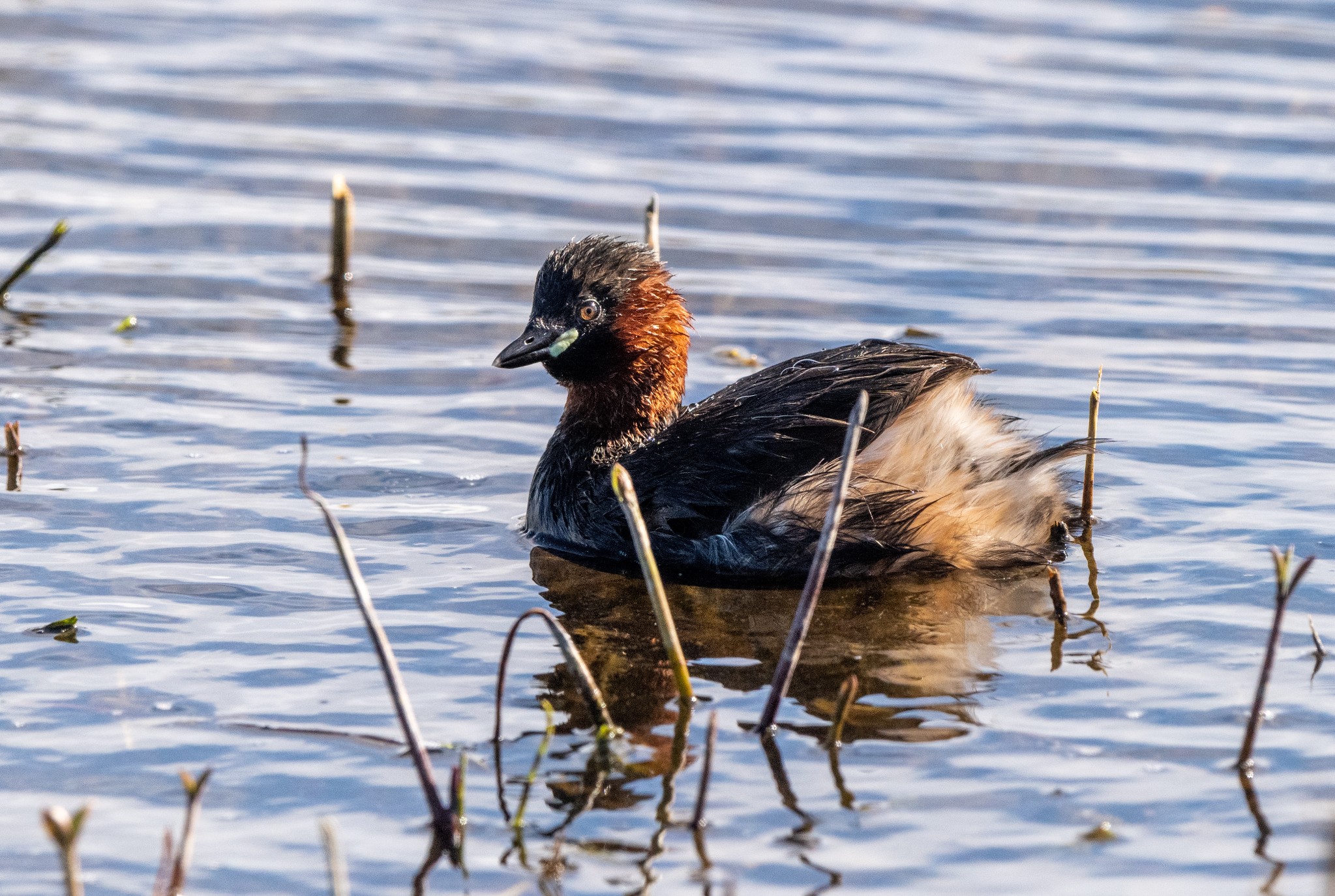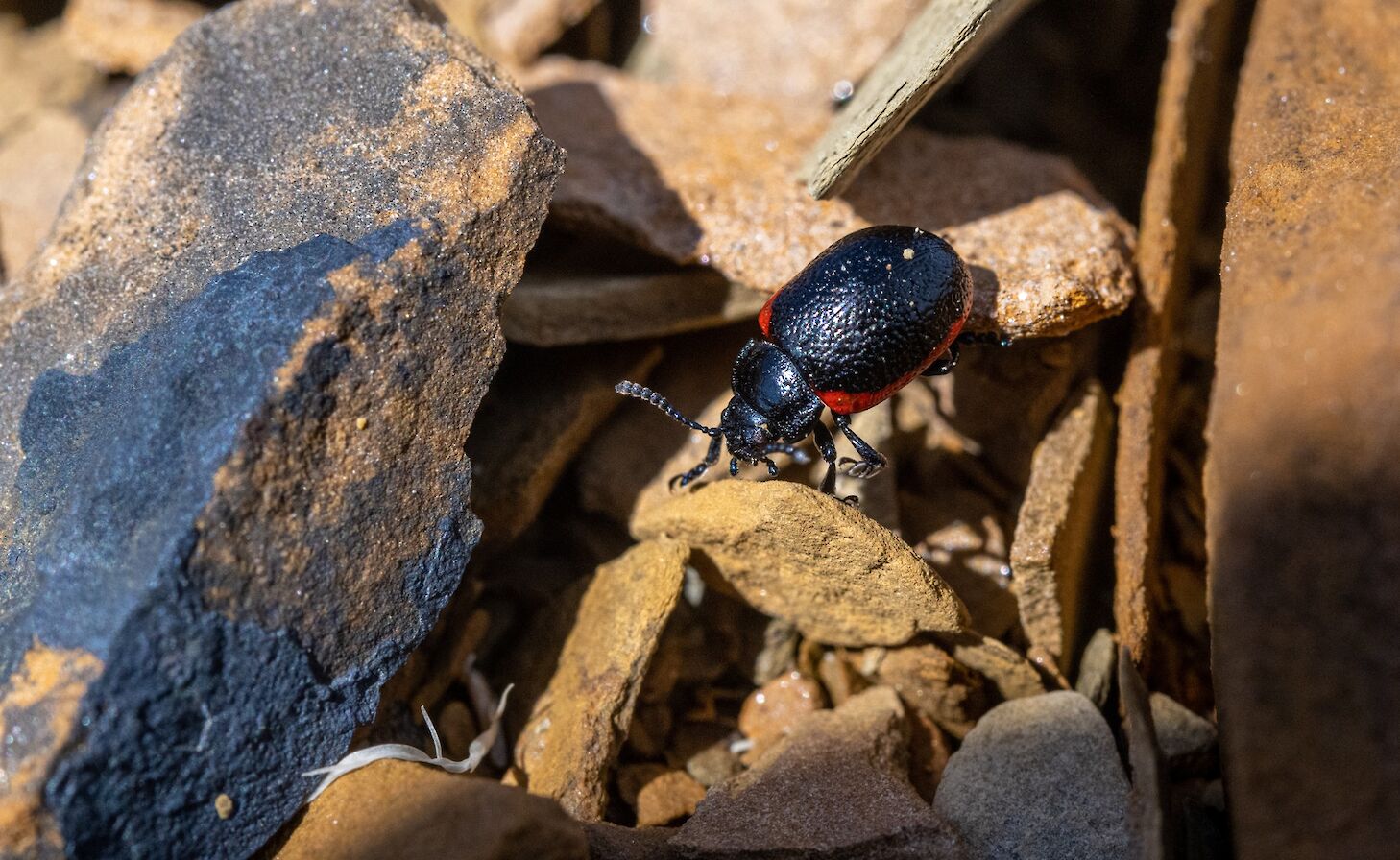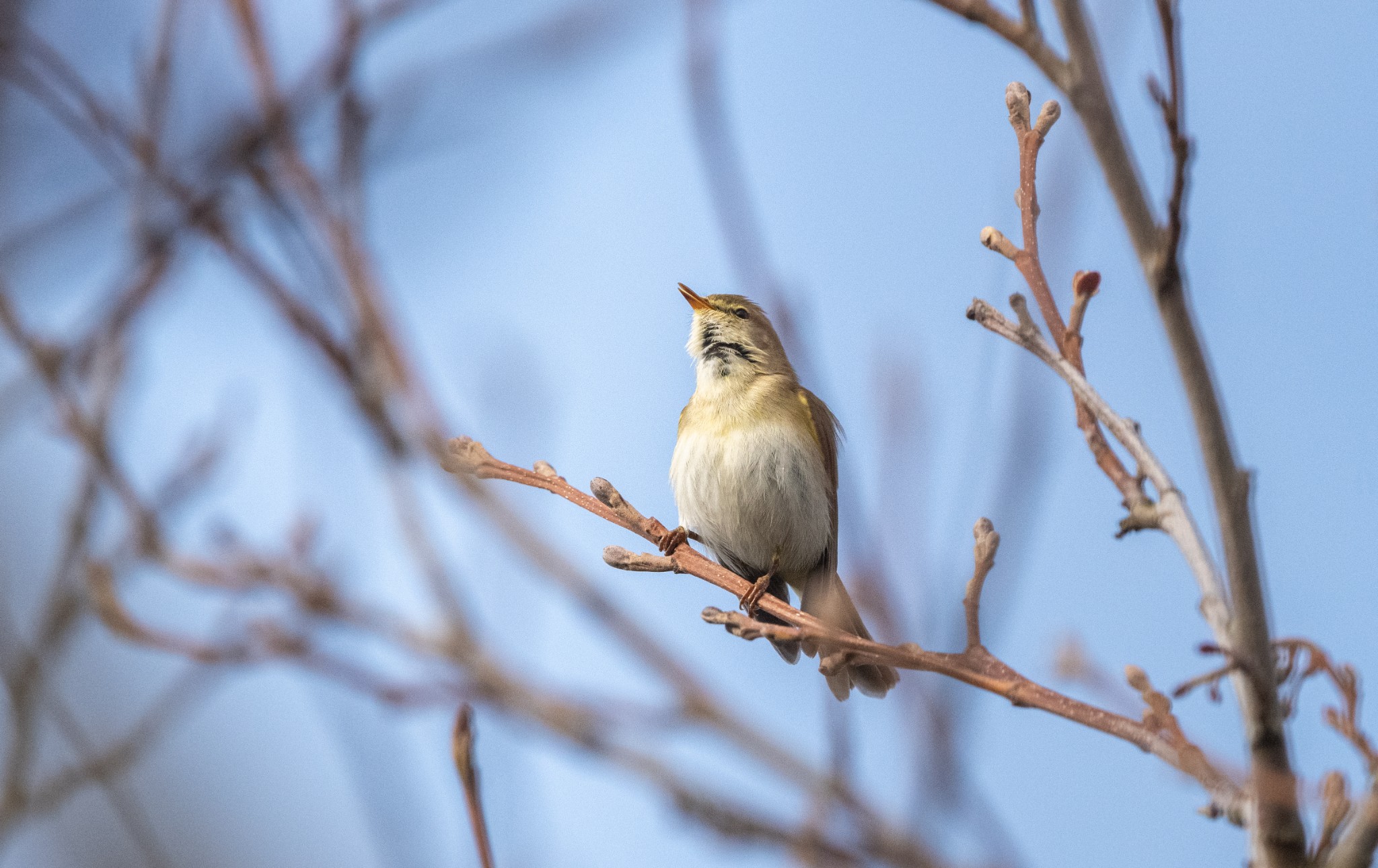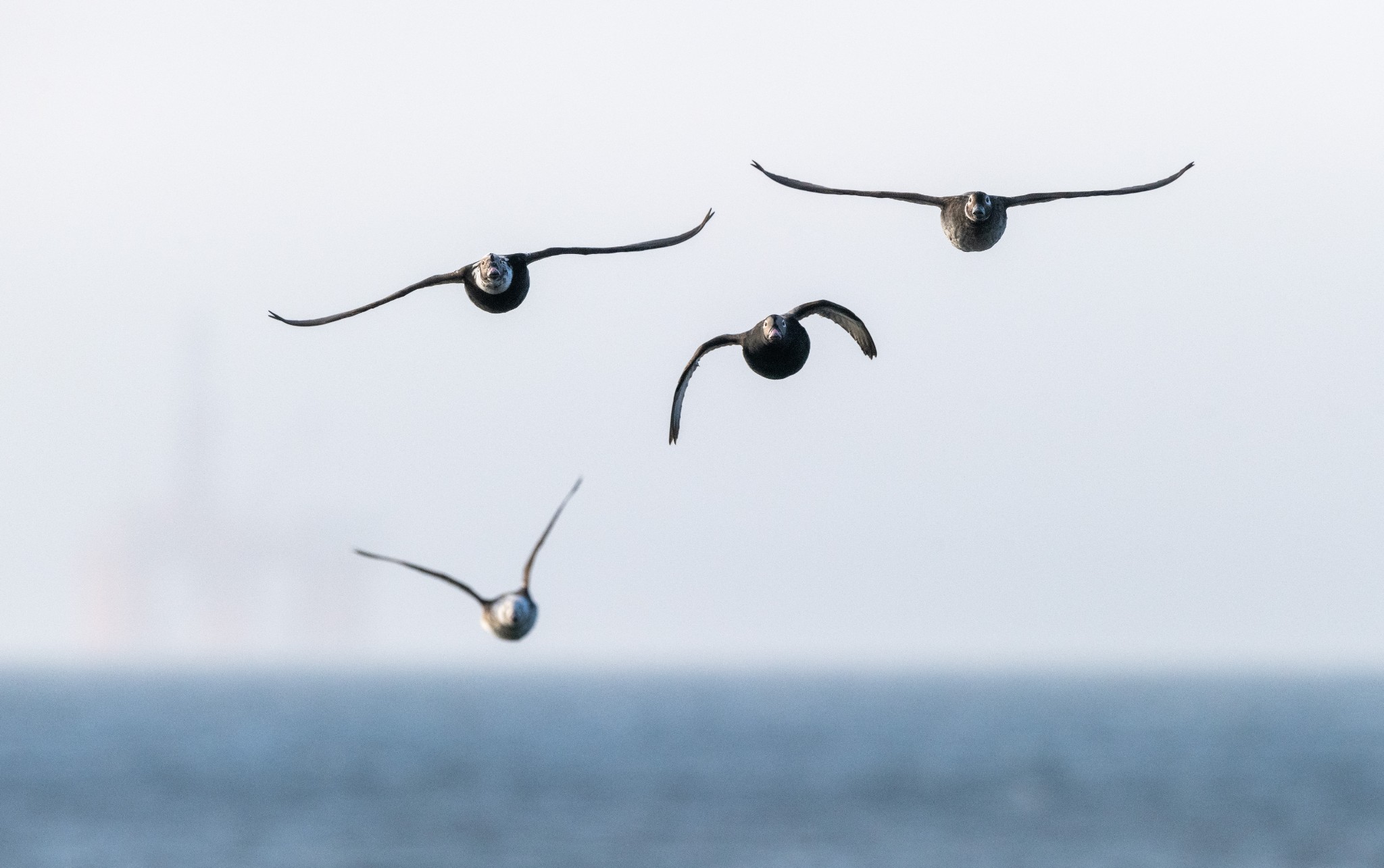The sun has only been up for 15 minutes and yet the scene in front of me is alive with the sound of bird song.
Well, it's actually mainly calls - those of the wading birds that are establishing territories, displaying, and from the evidence of the redshank in the field below, already mating.
The air is still and chilled. Sometimes when you have a camera in hand, I think you can lose the joy of the moment, and this is a joyous moment. I’m sitting at the ‘Listening Wall’, a semi-circle wall near to the road in Birsay, adorned with the stone carved names of some of the birds I can see and hear in front of me; ‘Whaup’ (curlew), teeick (lapwing), and probably the best Orcadian bird name of all, the ‘watery pleep’ (redshank).
It looks out over the Loch of Isbister and the Loons RSPB Reserve to my right. These, and the nearby Loch of Banks, make up the finest area of intact wetland in Orkney. Yet I have to cut through the overriding cacophony here in order to pick out the calls of the waders. Black headed gulls, with their beautiful dark chocolate heads and bright red bills, are numerous here and their rather jarring calls combine to make quite a racket.
Lapwings rise and fall, tumbling after one another, but their display is broken when they spy a hooded crow and immediately turn their attention to seeing it off. Lapwings are one of our earliest breeding waders and often have chicks whilst other waders are still at the mating stage. I never tire of the bubbling curlew, a bird in huge decline in the rest of the UK. They display as if in slow motion, their wings flutter as they rise and glide effortlessly to the ground before starting their undulating display all over again.
An hour after sunrise there is a marked drop-in activity and I can’t help feeling how much I miss by not being up at dawn every day. But there is one last treat before I leave, the unmistakable song of the skylark. In plumage terms you couldn’t find a plainer looking bird. It feels like its punk ‘hair-do’ is trying to jazz things up a little but its song more than makes up for those apparent shortcomings. I recently took my nine-year-old nephew birdwatching on his parents’ farm and they’ve had a resident pair of skylarks for some years, always returning to the same stubble field.
He hadn’t seen or heard a skylark before and just as I ask him to look upwards, he said “what is that crazy sounding bird?” We had a good giggle before getting back to the other important topic on our wildlife walk, “what do you think would be the perfect NERF gun in a battle, Uncle Raymond?”
I leave the skylark high above and as the Loons RSPB hide is only a short distance away, I head in and open one of the viewing windows. I’ve often thought this hide is somewhere you need to spend at least a minimum of an hour in order to get good sightings. It can sometimes appear quiet but it’s worth the wait as birds come and go from the safety of the thick reedbed in front. Moorhen, coots and a pair of gadwall are here, but what I’m interested in is an active little bird, busy diving underwater in the shallow water close to the hide.
I may have to redact my comment about the ‘watery pleep’ being the best Orkney bird name. The little water bird in front of me has the rather unflattering Orcadian name of the ‘little footy arse’ - goodness knows how it came to be known by this. It’s better known as the little grebe. It looks so buoyant it’s a wonder this tiny ball of fluff can get underwater. The sun catches its plumage perfectly, I can see a highlight in its eye, the light bringing out the best in its bright russet neck feathers.
Waiting that little bit extra was worthwhile as I spot a bird I’ve never seen before. ‘Did that reed really move?’, I thought, as you’d be forgiven for thinking it hadn’t because the plumage of this bird is almost perfectly camouflaged in this reed bed habitat. A bittern has slowly emerged into a half clearing, staying stock still, turning its back and with two footsteps completely disappearing. If ever the word ‘skulk’ was appropriate, it would be now. This joyous morning just went up a notch.
From here I’m heading to the coast to see another rarity, but at least this one is resident to Orkney. Like many of us this creature seems to enjoy sunny days and a bit of warmth. I’m anthropomorphising here, I’m not sure if a beetle can enjoy things but these are certainly the best conditions to find them in. Chrysolina latecinta (sub-species intermedia) Is a curious creature and can be found on the exposed rocky ground on cliff edges on Orkney’s west coast.
The Latin name is a bit of a mouthful but it’s also known as the sea plantain leaf beetle. As the name suggests it is thought to have a relationship with the sea plantain plant, but this plant is widespread throughout Orkney and yet the beetle is not. This suggests its liking for the harsh conditions of the clifftops is what limits its distribution.
However, Martin Gray, one of Orkney’s finest naturalists, recently found really good numbers further south towards the Black Craig, many of them in habitat hitherto thought unsuitable, or at least unlikely given where they are normally to be found. I can tell that the mysteries of this fine-looking beetle have set a small fire within Martin, so in the years ahead we will know a lot more about this beetle with the red ‘go-faster’ stripe.
Tomorrow I’m going to take advantage of these glorious conditions. Another of our specialties also likes the breezy sunny weather in order to ‘sky dance’, the hen harrier.
Prolonged sunny days have a not-unexpected effect in Orkney, especially as the wind has turned to the east. As I drive to the RSPB reserve at Cottascarth banks of fog envelope the hills. Unless this clears there won’t be any sky dancing today. As I approach the hide it seems apt that the ‘ghost of the moor’ appears from the gloom and glides ten feet over my head; a male hen harrier, his wings dipped in ink.
The dampness is making it cold but I sit a while sheltered with a dyke at my back. In the fog comes the noise of a raptor, not unlike a peregrine but thinner and with less ‘oomph’ behind it. It’s slightly confusing because as the fog rolls through I can see a female hen harrier noisily rising to challenge a raven. But this is not the call of a hen harrier.
The banks of fog clear a little and I can see a small bird alight from the heather with something in its talons. It’s a female merlin and as she settles to pluck her prey, I scan the fence line and what appears to be nothing more than the end of one of the posts suddenly takes off. The orange breast and slate grey back makes this a male merlin, and I am overjoyed to see them together. Their behaviour suggests this is their territory.
The fog rolls in again and despite being obscured from view I continue to hear them call. I’m cold now and wish them good luck before heading back to my car. The forecast is for light winds and full sunshine for the remainder of the week and so I hope to catch the dawn chorus the next morning, if the fog doesn’t scupper my plans, that is.
Muddisdale isn’t far from my house in Kirkwall, a delightful young wood that is a haven for chaffinch, song thrush and blackbirds. The female sparrowhawk wheeling overhead clearly knows this is a good place to hunt. The first birds I spot are a pair of lesser redpolls, the male especially looking respondent with his rose-coloured breast. As pretty as they are it’s not them I’m here to see.
I could hear them as soon as I arrived and I could pick out three separate birds singing from different trees, but I’m finding it not so easy to get a clear view of one - they aren’t singing from the tree tops but rather amongst heavier cover. I have to be patient. Two willow warblers are chasing each other from tree to tree and as one stops above me it rears up and fans its quivering wings out. This is the male’s courtship display. I stay still and the birds continue to wheel around. To me, these encounters are what makes watching wildlife so special.
This small warbler has made a big effort to be here, a 2500-mile effort from tropical Africa. The next bird I want to photograph will soon be making a migration of its own but in the opposite direction.
Large flocks of long tailed ducks have gathered in Scapa Flow, spending the day coming and going to freshwater lochs. They might be my favourite duck but they are a challenge to photograph in flight given how fast they fly. I like a challenge however and position myself obscured on the shore near their flight path. I’m soon aware however that something else is trying to be obscured here, a ringed plover. I suspect it has a nest nearby and sure enough, when I move off, I can see through binoculars that it has settled itself back amongst the stones.
It’s not long before the ducks come streaming overhead. These brown and white missiles make a whooshing noise as they fire past low overhead. I manage to make an image I’ve thought of for a long time, one where the incoming birds are head on and in focus! The 3D focusing system of my Nikon has worked hard to capture it. I hope that the birds will keep coming in whilst the sun sets but alas they don’t stay on the freshwater loch overnight. Instead, I head to Kirbister Loch and spend a serene hour in mirror calm conditions, sitting watching a mute swan glide past whilst my labrador waits patiently next to me.
Yet Orkney being Orkney, it pays to take nothing for granted with the weather. I’ve headed to Westray for the weekend and the wind is gusting 40mph. It’s exhilarating watching the numerous fulmars on the cliffs - buffeted by the updrafts they do their best to be settled, but it’s almost like they are drawn by the wind saying ‘hey, come play’. I photograph a thunderous heavy wave as it stalls and crashes on the seaweed-laden rocks below and then have to rest a little such is the ferocity of the wind.
This feels like winter again. That is until a colourful little reminder whizzes past. There’s just one, but it wouldn’t be here if it wasn’t spring. It’s a puffin, and soon there will be more than one, adding life and character to these salt-soaked cliffs.
Find out more about Raymond’s work via his official website. You can also find him on Facebook, Twitter and Instagram.






